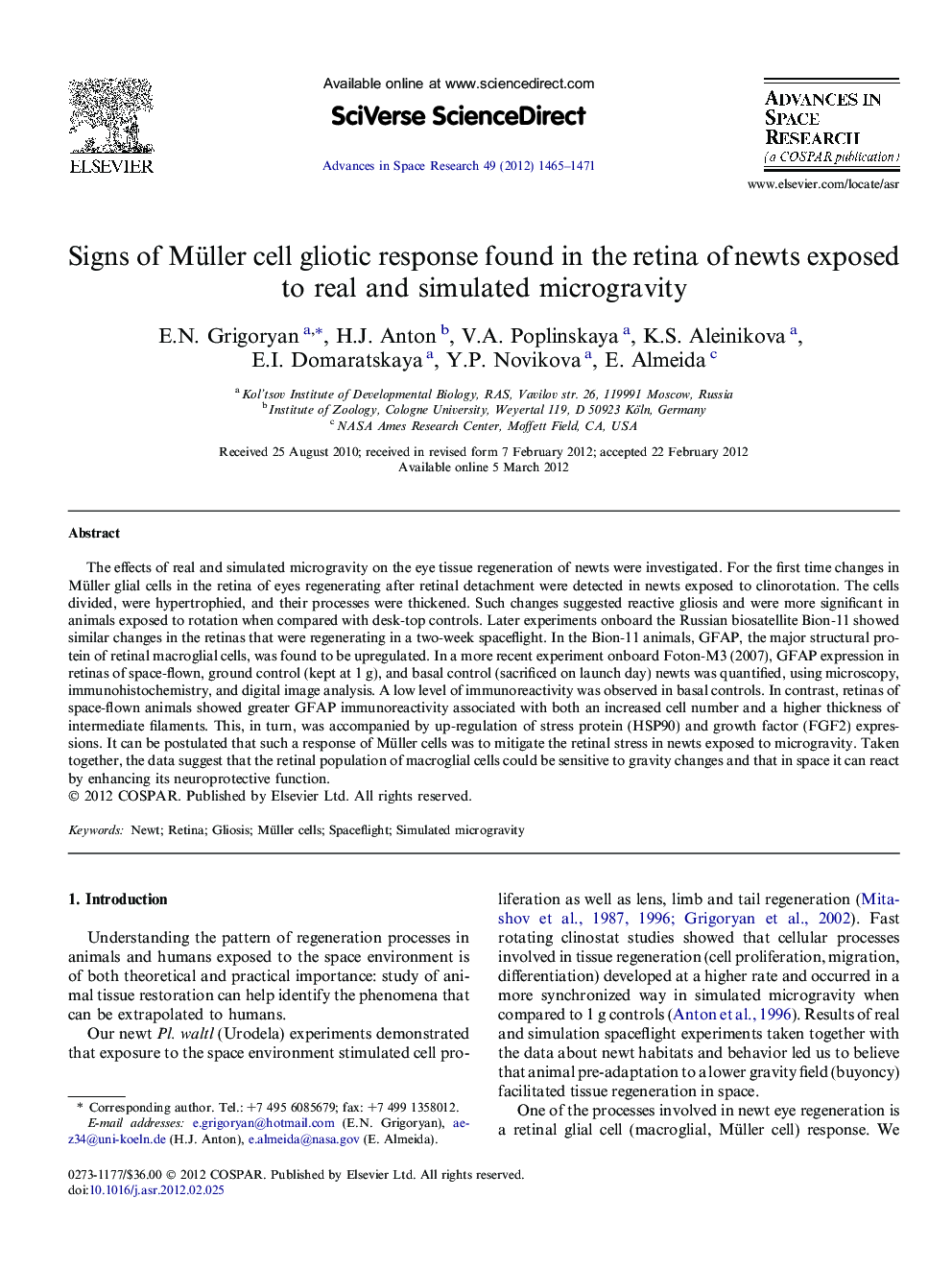| Article ID | Journal | Published Year | Pages | File Type |
|---|---|---|---|---|
| 1766054 | Advances in Space Research | 2012 | 7 Pages |
The effects of real and simulated microgravity on the eye tissue regeneration of newts were investigated. For the first time changes in Müller glial cells in the retina of eyes regenerating after retinal detachment were detected in newts exposed to clinorotation. The cells divided, were hypertrophied, and their processes were thickened. Such changes suggested reactive gliosis and were more significant in animals exposed to rotation when compared with desk-top controls. Later experiments onboard the Russian biosatellite Bion-11 showed similar changes in the retinas that were regenerating in a two-week spaceflight. In the Bion-11 animals, GFAP, the major structural protein of retinal macroglial cells, was found to be upregulated. In a more recent experiment onboard Foton-M3 (2007), GFAP expression in retinas of space-flown, ground control (kept at 1 g), and basal control (sacrificed on launch day) newts was quantified, using microscopy, immunohistochemistry, and digital image analysis. A low level of immunoreactivity was observed in basal controls. In contrast, retinas of space-flown animals showed greater GFAP immunoreactivity associated with both an increased cell number and a higher thickness of intermediate filaments. This, in turn, was accompanied by up-regulation of stress protein (HSP90) and growth factor (FGF2) expressions. It can be postulated that such a response of Müller cells was to mitigate the retinal stress in newts exposed to microgravity. Taken together, the data suggest that the retinal population of macroglial cells could be sensitive to gravity changes and that in space it can react by enhancing its neuroprotective function.
